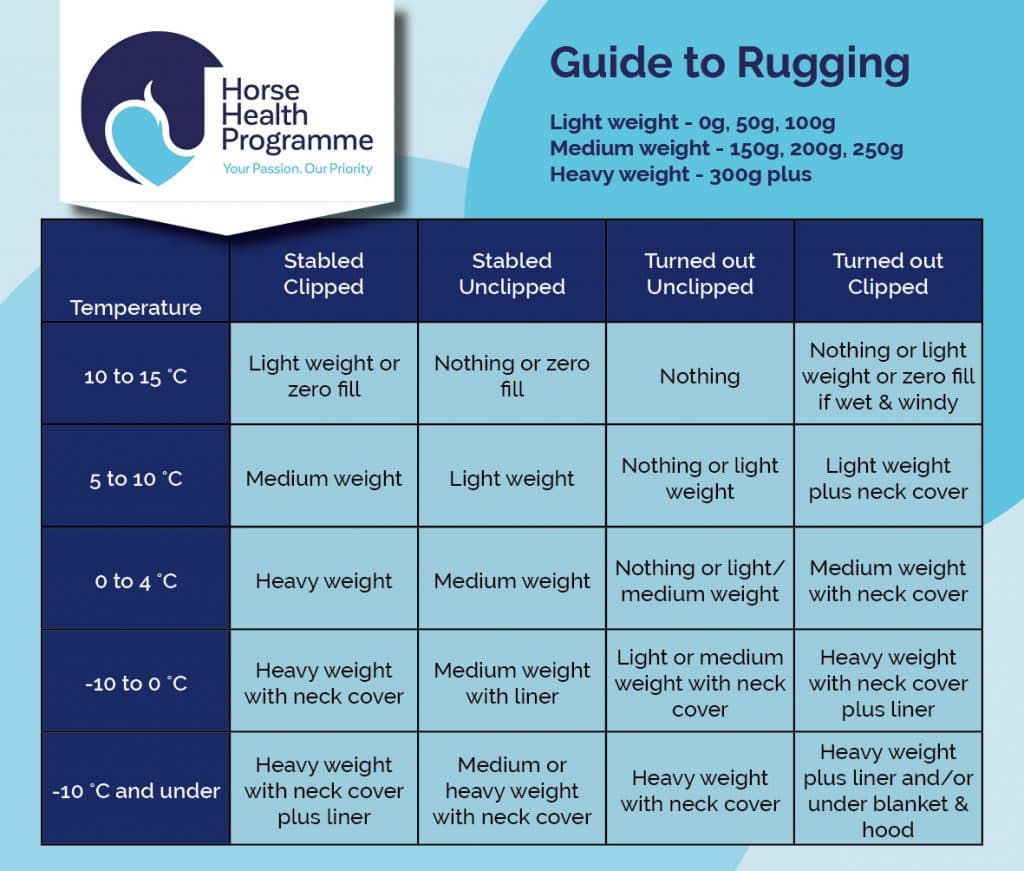Rugging your horse
Bear in mind that when we feel cold, your horse can still feel very comfortable. Horses have a different thermoneutral zone than humans, so this means that a healthy unclipped horse typically only feels the cold when temperatures drop to 0ºC.
When deciding what rug to use, or whether your horse needs one at all, you will need to consider the following:
- Is your horse stabled or turned out?
- If your horse is turned out, is shelter available? Is the weather wet and windy? This can make the temperature feel colder than it is, especially if shelter is not available.
- The age & type of your horse – young and old horses may be less likely to be able to maintain their body temperature.
- Whether your horse is clipped or not, and if so, what type of clip they have. Horses that have a low trace clip, for example, which leaves much of the hair on their body, they can be considered ‘unclipped’.
- The level of their work and their stable management.
- Your horse’s health and condition.
- Your horse’s access to forage.
Use the table as a general guide to what rug you may need. This is a general guide and we do recognise that all horses are different, and your decision should be made based on your horse’s needs.
Just remember that it’s important not to ‘over rug’, as your horse can become too warm which may lead to them sweating underneath the rug, which can make them very uncomfortable. It’s easier for a horse to warm up than cool down. A horse that cannot cool down enough may suffer from heat stress if they are over-rugged. Signs of heat stress are loss of appetite, colic like symptoms/restless, rapid heart rate/breathing rate, lethargy & dehydration. This is why it’s crucial that you don’t over-rug your horse to the extent that he gets too hot and cannot cool down.






